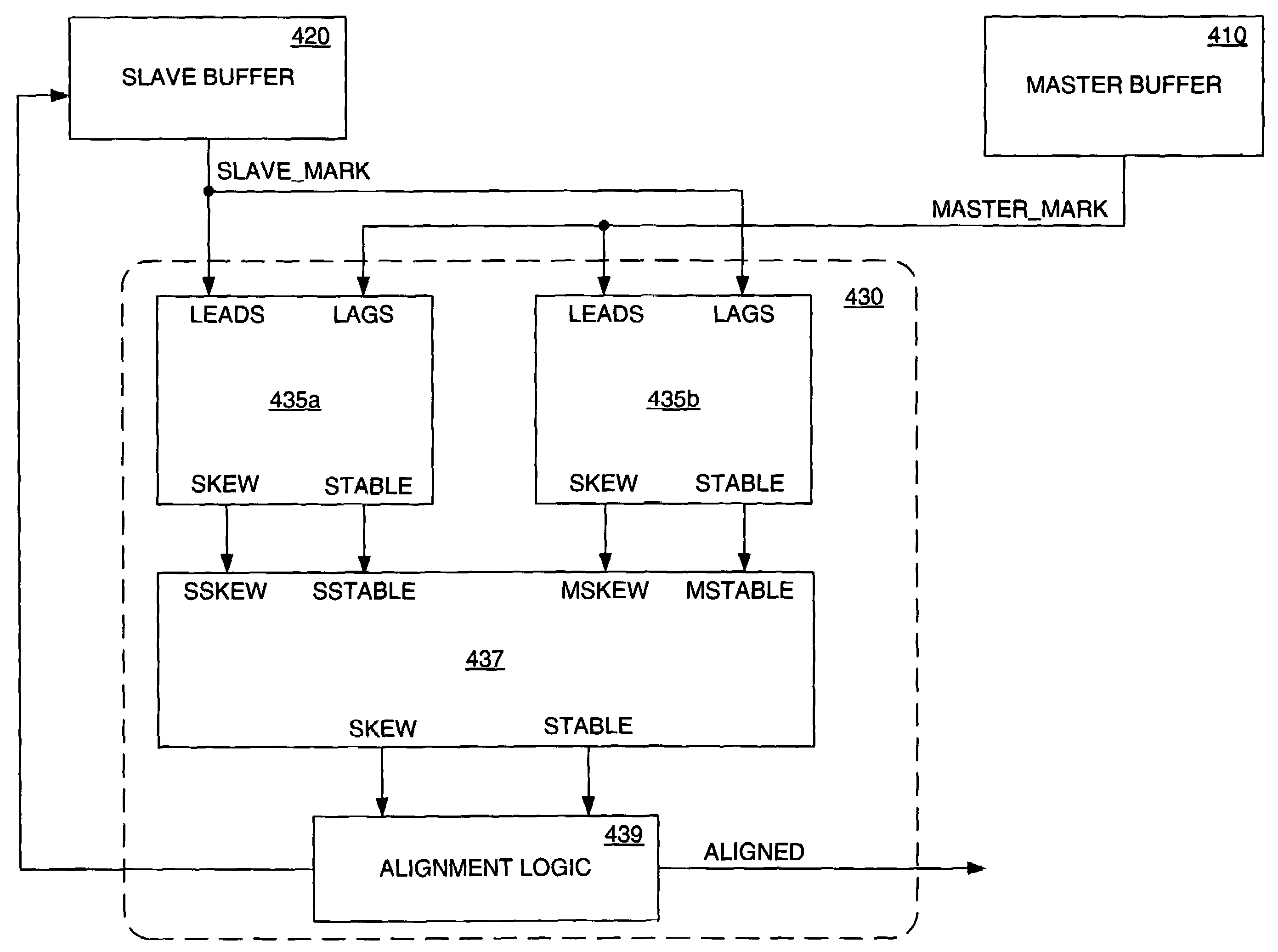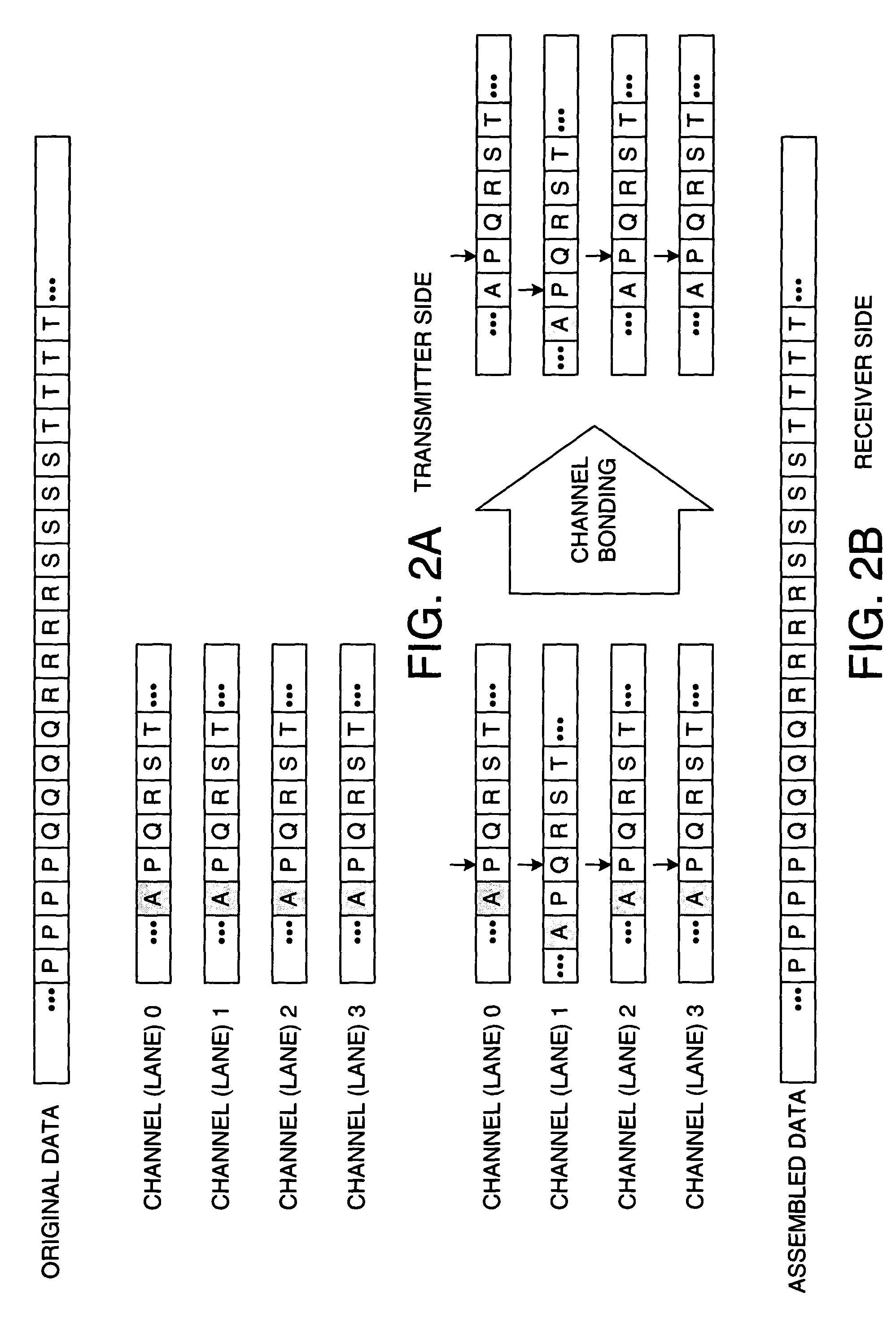Distributed adaptive channel bonding control for improved tolerance of inter-channel skew
- Summary
- Abstract
- Description
- Claims
- Application Information
AI Technical Summary
Benefits of technology
Problems solved by technology
Method used
Image
Examples
Embodiment Construction
[0014]The present invention is believed to be applicable to a variety of high-speed communications systems. While the present invention is not so limited, an appreciation of the present invention is presented by way of specific examples, and numerous specific details are set forth to provide a more thorough understanding of the present invention. However, it will be apparent to one ordinarily skilled in the art that the present invention can be practiced without these specific details. In other instances, well-known circuits and devices may be omitted or presented in abstract form in order to avoid obscuring the present invention.
[0015]FIG. 1A shows an example of channel bonding at a transmitter end, and FIG. 1B shows the same example from the receiver end. A portion of an original data stream 110 comprises a sequence four-byte data words: PPPP, QQQQ, RRRR, SSSS, and TTTT. In FIG. 1, each box represents a byte of data, and bytes with the same label are part of the same data word. In...
PUM
 Login to View More
Login to View More Abstract
Description
Claims
Application Information
 Login to View More
Login to View More - R&D
- Intellectual Property
- Life Sciences
- Materials
- Tech Scout
- Unparalleled Data Quality
- Higher Quality Content
- 60% Fewer Hallucinations
Browse by: Latest US Patents, China's latest patents, Technical Efficacy Thesaurus, Application Domain, Technology Topic, Popular Technical Reports.
© 2025 PatSnap. All rights reserved.Legal|Privacy policy|Modern Slavery Act Transparency Statement|Sitemap|About US| Contact US: help@patsnap.com



